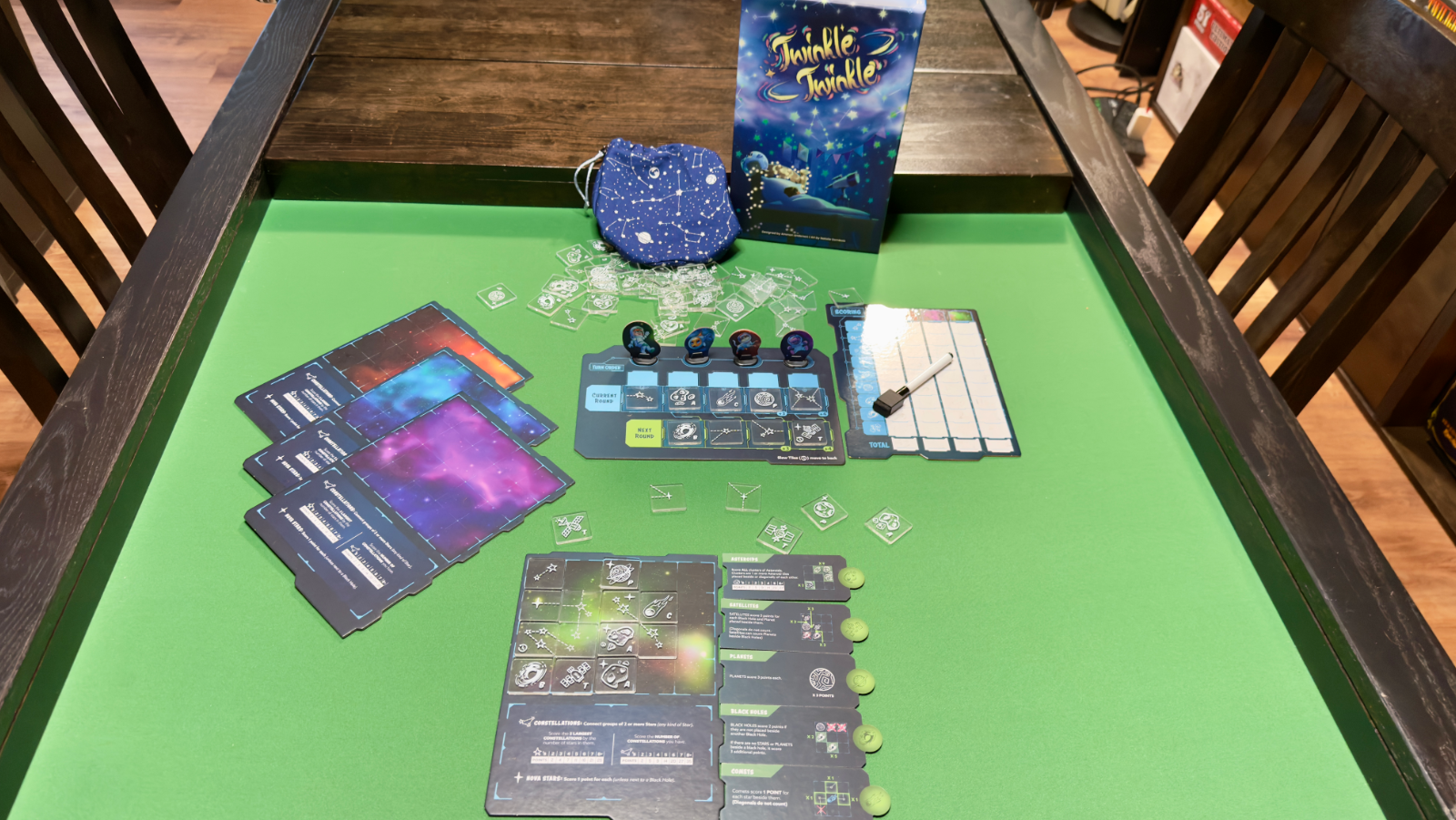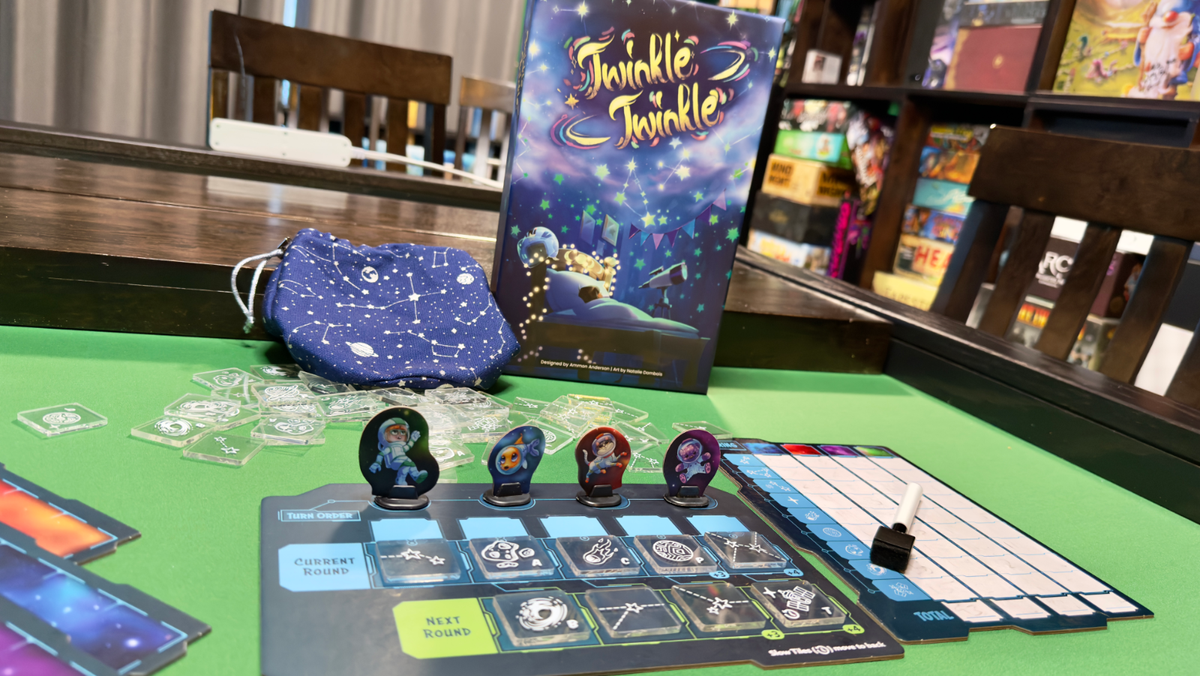
We first caught a glimpse of Ammon Anderson’s Twinkle Twinkle at PAX Unplugged in 2023, as a part of that year’s PAX Rising Showcase. It was the first hint at how prolific the Gnome Hollow designer would prove to be in the coming months, and we were eager to see how he planned to follow up the not-even-released game we previewed first at GAMA Expo earlier in the year. What we saw was a quicker and lighter experience than Gnome Hollow that, like that game, managed to sneak in some crunchiness that belied its simple mechanics. And frankly, for a game that came in a zip-up pencil bag it had surprisingly good table presence due to the clear acrylic tiles and hand painted nebulas on the player boards. Ammon graciously let us take one of his prototypes with us, and the game proved to be a hit with just about everyone who tried it, regardless of weight or theme preference.
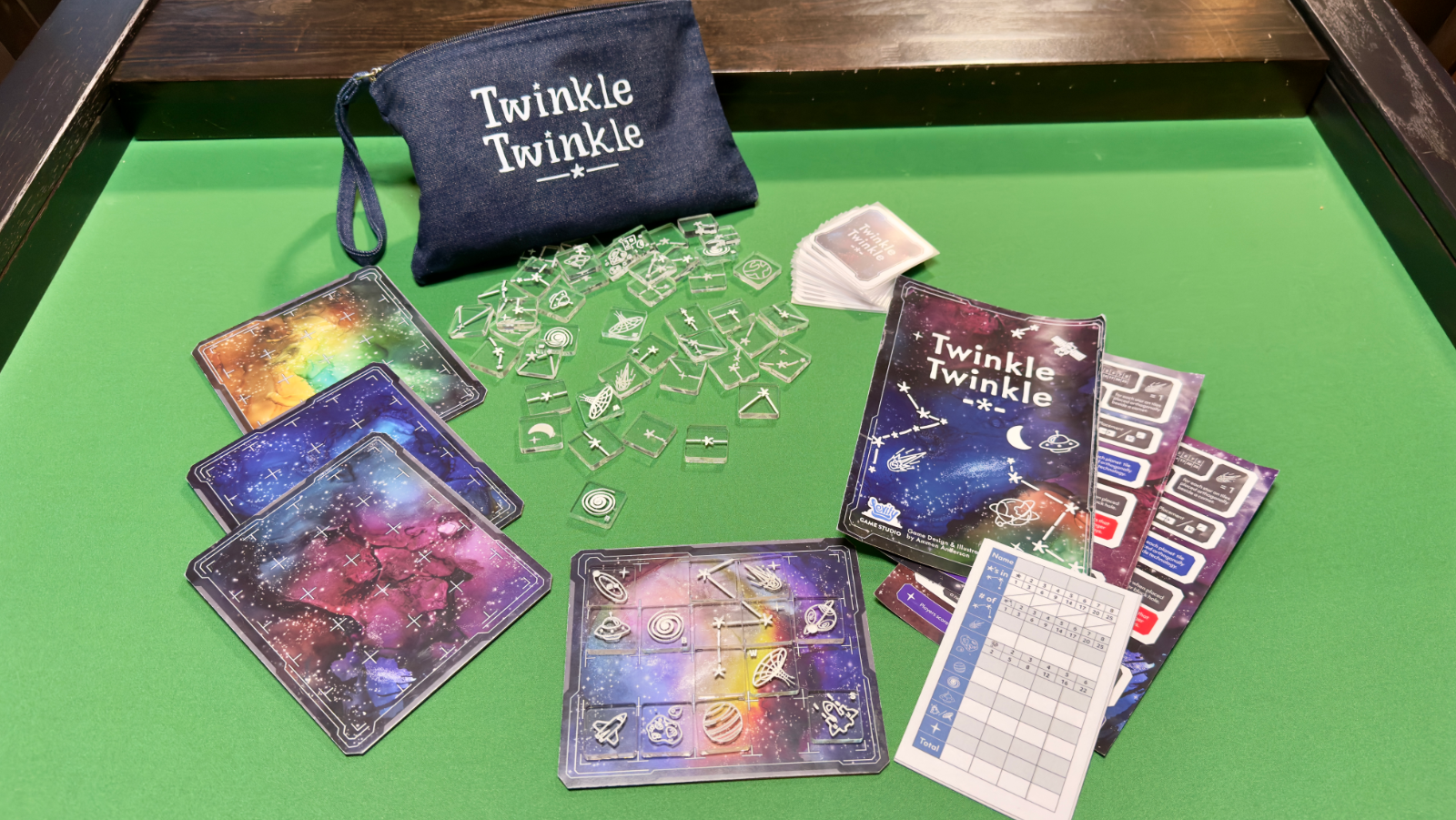
Twinkle Twinkle 2023 version
The core of Twinkle Twinkle is that it is a tile-drafting game for up to four players, with each player filling up their own star chart with planets, asteroids, comets, black holes, “technology tiles” (satellites and UFOs), and, of course, stars that can connect into larger multi-tile constellations (the earlier version of the game also had wormhole and “space invader” tiles, adding board manipulation and tile theft into the mix). Some tiles yielded more points when grouped together (asteroids) or when grouped with other tiles (comets scored the number of stars orthogonally adjacent to them), while others caused point loss (black holes cancelled out points from stars and planets). Even in such an early state, our group got super competitive with scoring.
Fast forward to PAX Unplugged 2024: Gnome Hollow has been out since Gen Con (the monster hit we always knew it was going to be), and AllPlay has signed Twinkle Twinkle and are promoting it as the main game in their next Kickstarter with big plans for Gen Con later in the year. As such, AllPlay was kind enough to invite us to give the new iteration of Twinkle Twinkle a spin, check out the rules explanation video we shot at the convention:
One of the things I love about previewing games the most is when I am able to see the game in multiple states, see it evolve and tighten up over time. The collaboration with AllPlay has yielded some improvements and some interesting omissions in this new version of the game, overall feeling like a much more focused experience. The biggest addition to the game was how tile drafting is now handled, with a new board that displays one more tile than the number of players each turn; the second row of the board displays the following turn’s tiles (minus one as the leftover tile from the current turn’s row shifts to the leftmost position). Why is the tile position important? Because now each player has a standee character that is placed above the tile selected, and the order of standees at the end of the round becomes player turn order on the next one, making that tile selection even more impactful. The addition of the drafting board and mechanic around player order added just the right amount of inter-player friction the previous prototype lacked.
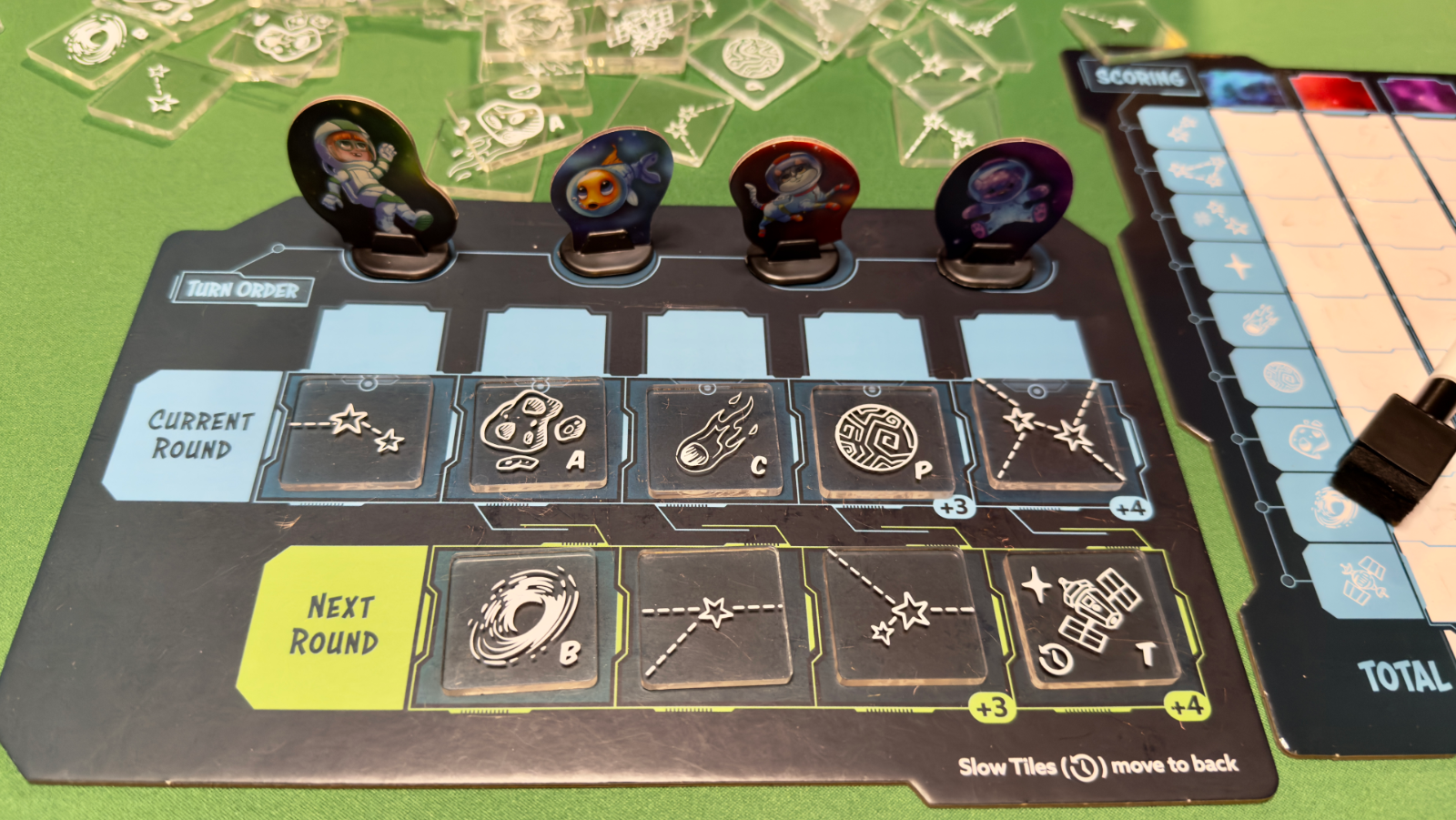
The tile drafting board
Now, I do wish the wormhole and space invader tiles had made the cut, as they were the only tiles that allowed for player board manipulation post tile placement, but the black hole tiles have become a little more forgiving, only negating the four pointed ‘nova’ stars, not ALL of them, and instead of cancelling out the three point planets, they simply score higher if there are simply no planets or stars beside them. This was an important distinction that made the black hole tiles a little less punishing during end-game scoring, and strategies arose around well placed planets and satellites that maximized the point scoring potential of those pesky singularities. If you would rather have more punishing scoring rules, however, you are in luck, as the black hole scoring system I described from the previous prototype lives on, along with other tile scoring variants that can be flipped over as a group or piecemeal, some of which even add negative points for certain circumstances.
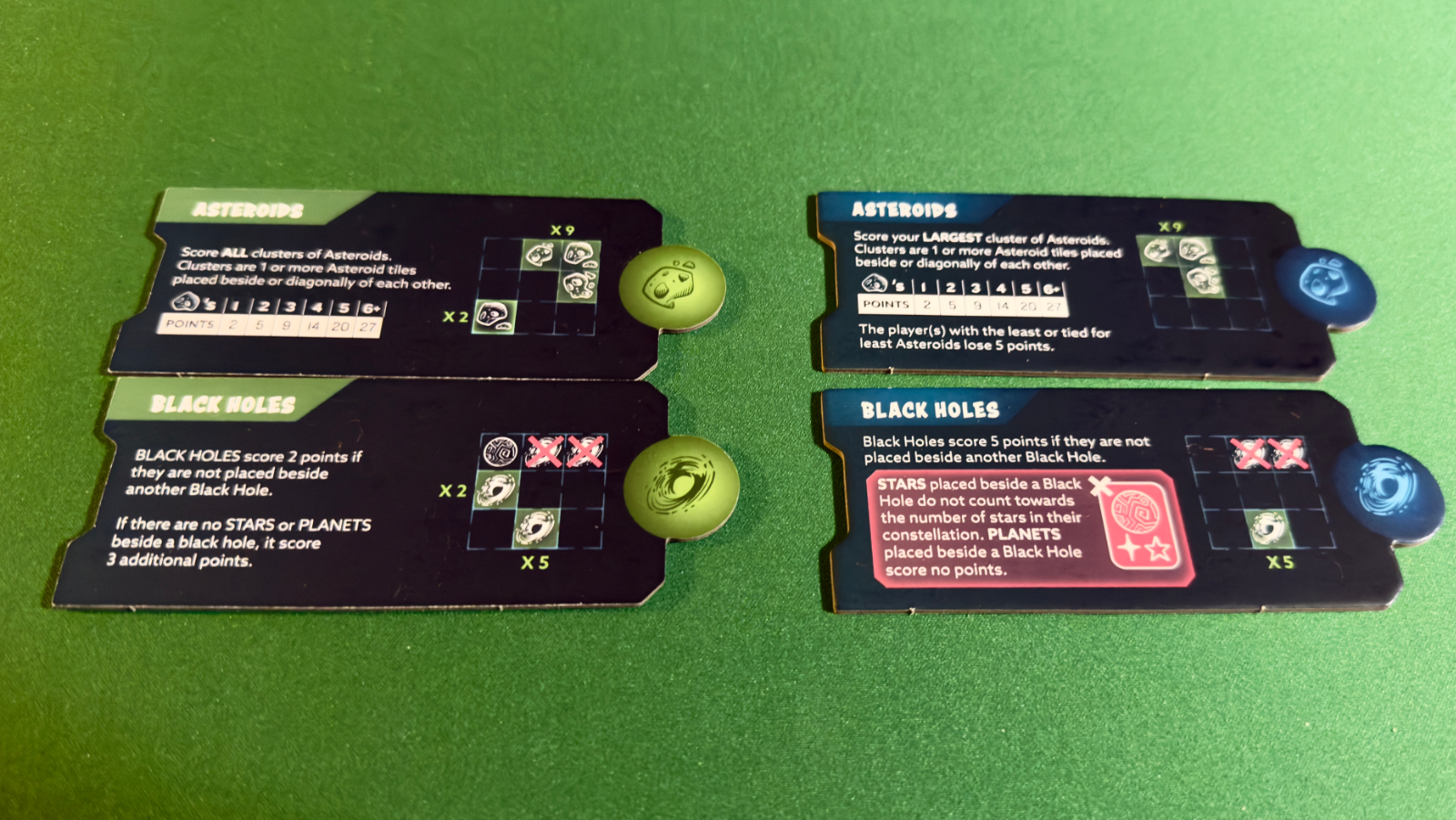
Scoring variants
Based on our time with Twinkle Twinkle, both the earlier prototype and what looks and feels like a very close to finished prototype, I don’t feel like it is hyperbole to say that Ammon Anderson and AllPlay have another hit on their hands. If you are an AllPlay fan and familiar with their games, this one is similar in weight and size to last year’s River Valley Glassworks (same box dimensions, even), and I have even found that folks who liked that game found Twinkle Twinkle to scratch a similar itch. AllPlay has some fun stuff in store for the Kickstarter (which launches on Jan 28th here), such as glow in the dark tiles and even a mobile scoring app, which with a snap of a picture takes care of the one part of the game that can get really confusing. In true AllPlay fashion, the Kickstarter campaign also features two more games, Merchants of Andromeda, and Waddle, and they are even doing a giveaway for an all-in pledge of the three games that you can enter on Instagram and TikTok.
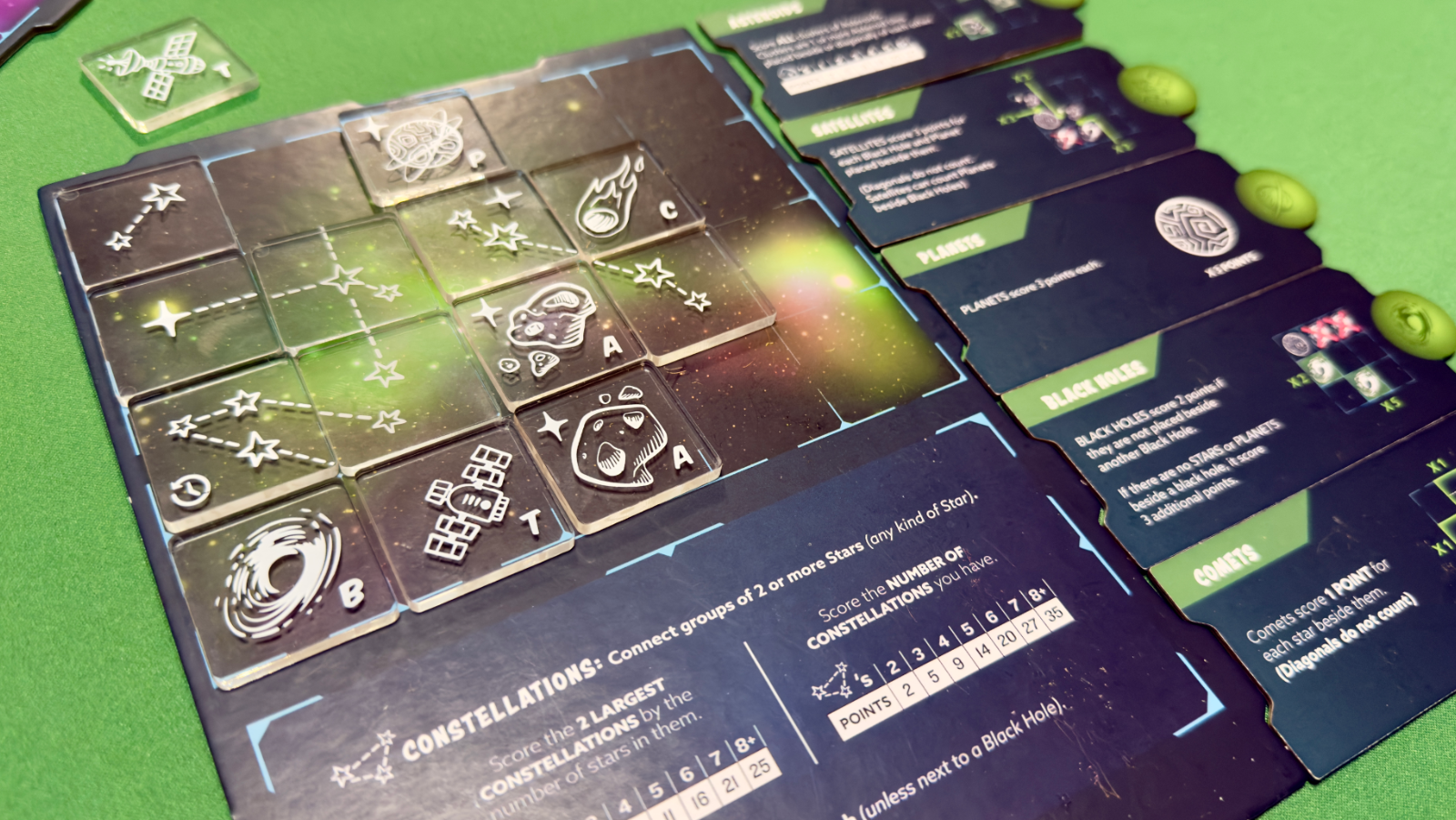
The player board
Twinkle Twinkle launches on Kickstarter on Jan 28th, stay tuned to GamingTrend for more about this game and others!
